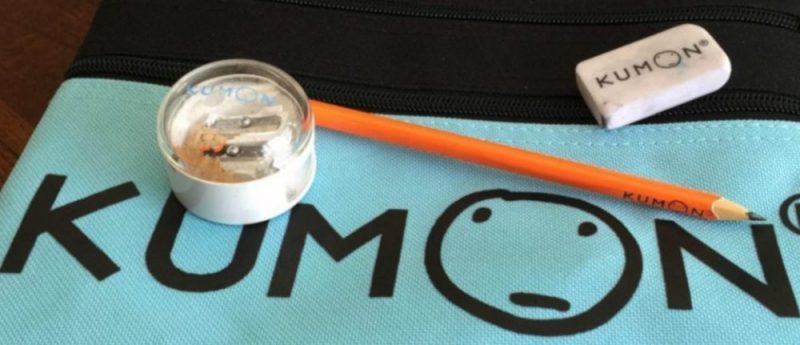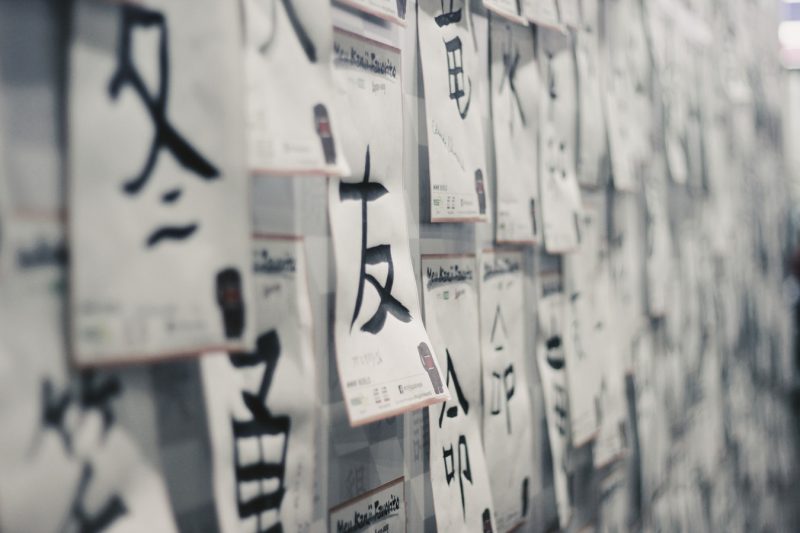Do you know the Kumon method? What sets the Kumon method apart from other face-to-face courses? In this article, we are going to talk about the Kumon Japanese course and its learning method! Is it worth it?
As the name makes clear, Kumon was created by Japanese in the year 1958 by professor Toru Kumon, who started teaching math to people who had difficulties in school; soon he spread this method around the world, which first appeared in Londrina, in the year 1977.
The main objective of the Kumon method is to create independence in studies, generating self-education and a taste for learning. In other words, the focus of the Kumon method is to make the person study alone, despite the existence of face-to-face classes.
Kumon courses are spread across several cities in Brazil and around the world and teach mainly mathematics, English, Portuguese and Japanese. Is the Kumon method worth it?
Table of Content
Kumon Method - Face-to-face course or not?
Those who know Suki Desu know that I do not recommend in-person courses, mainly because of the slowness with which the classes are taught with the aim of making you pay endless monthly fees and end up spending a fortune.
The Kumon method is different and encourages learning at home, making the person really learn at a much faster and higher level. Still, Kumon's Japanese course shares characteristics of face-to-face courses that are negative.

Those who usually opt for face-to-face courses need the help of a teacher, discipline and motivation. Unfortunately, if the focus of the course is to make the person study at home, they may not be able to do this due to lack of discipline.
Another negative reason for a face-to-face course is the need to travel to classes weekly. The Kumon method gets exactly stuck in the back and forth of studying at home and in the course. So why not just take an online course?
As already mentioned, if a person lacks discipline, the Kumon method is useless.
How do Kumon Method classes work?
In the Kumon method, you receive the material to study at home and go weekly to the Teaching Unit to solve tasks and receive individual support. No class is presented to the class, each student has an individual support in the unit.
Another school that uses a similar method is Prepara. I have had the opportunity to take about 5 courses at Prepara, and unfortunately, I don't remember anything I studied there, even though I work in the same field as the courses I took.

Kumon is better because it encourages you to study at home with quality material. Kumon students usually stay at the Unit 2 times a week for about an hour. It's a very short time, which only makes you waste time getting from home to the Unit.
My friend said that the Japanese course goes from Module A to L, she spent 9 months and only reached module C. In addition to this basic Japanese course, there is another more advanced course called Kokugo.
The student, upon completing the last level (stage L) of the Japanese course, will have studied approximately 1,000 kanji, 6,380 words, and literary works with a maximum of 6,000 characters, offering conditions to take the N2 of the Japanese Language Proficiency Exam..
kumon japanese course
As this site is focused on Japan and the Japanese language, I think it's good to give the kumon Japanese course a bit of prominence. As I mentioned earlier it goes from stage A to L, dividing the course as follows:
The table below represents the number of characters studied per text, number of total words learned and number of ideograms learned.
Responsive Table: Scroll the table to the side with your finger >>
| Module | Text | vol | Kanji |
| Beginner 4A | ?? | 109 | 0 |
| Beginner 3A | ?? | 204 | 0 |
| Beginner 2A | ?? | 403 | 0 |
| Basic A | 240 | 568 | 58 |
| Basic B | 280 | 856 | 121 |
| Basic C | 280 | 1088 | 185 |
| Basic D | 300 | 1323 | 265 |
| Basic E | 900 | 1640 | 347 |
| Basic F | 900 | 2055 | 428 |
| Intermediate G | 1000 | 2395 | 508 |
| Intermediate H | 1100 | 2885 | 588 |
| Intermediate I | 1300 | 3375 | 668 |
| Advanced JKL | ??? | 6380 | 1000 |
The number presented does not mean the number of words that the person will already know how to speak and write, only the number of words and ideograms that appeared in the material studied. To learn a person needs time and dedication.
At the Beginner level, the student will learn to read and write hiragana and katakana, simpler words, and understand basic sentences.
At the Basic level, the student will learn around 1,500 words and will practice text comprehension. Upon completion, the student will be able to take the N4 level exam.
At the Intermediate level, the student will be able to take the N3 of the Japanese Language Proficiency Test. And as previously mentioned, by the end of the course, the student will be able to take the N2 exam. Will they?
How much does the Kumon method cost?
Kumon Units are franchises where investors open Units in their cities, prices may vary depending on the region and Unit administrator. In addition to tuition, the course also requires an enrollment fee.
My friend paid around 230 reais a month to learn Japanese at Kumon in São Paulo. This is also the average for Japan. Suppose you spend 3 years to reach N2 (fluency) in Japanese. You will have invested a total of 8,000 reais to reach fluency.

If you have the same dedication to studying alone with Kumon, you will have a much lower expense studying on your own or investing in a cheaper online course like the Programa Japonês Online.
The Online courses on the Internet such as the Online Japanese Program uses a more effective method based on immersion and spaced repetition with Anki. This way, you spend less money and learn faster. There are basic Japanese courses for a flat price of 100 reais.
In the subjects Mathematics and Portuguese, the Kumon method can be well utilized, as we are not trying to learn an unknown language, only improving our performance in the subjects we have already studied in schools.
Remembering that learning will depend on your dedication, no matter what course you are taking!
IS IT WORTH IT OR NOT TO MAKE KUMON?
Although the method encourages self-study at home, along with self-taught, its study material hits the same key of filling in the blanks and answering questions, a traditional method that is not so beneficial in language learning.
I'm not saying the Kumon method is ineffective. I just think it's useless to pay monthly fees to have study material at home and spend more than two hours of your week to stay in a Unit doing exercises and asking questions with the teacher.
2 hours of class per week at a Kumon Unit is not enough to learn Japanese, English or another language. I also doubt that the children do the exercises proposed in the handouts correctly.

That way, you end up paying expensive monthly fees for a method that appears to be innovative, but is no different from online courses or face-to-face classes.
I've always wanted to do the Kumon method, but I believe that all the material taught by this method can be easily found on the internet without spending a penny. With discipline and dedication, you will be able to learn Japanese or any other subject on your own without having to pay anything.
Now, if you have a child, the Kumon method can be quite effective in encouraging children to learn on their own. It requires parental supervision to come to the conclusion that the high investment in this method is worth it.
There are complaints from Kumon in the Complain here, most about improper charges, difficulty in canceling, negligence and other problems. Unfortunately, we don't blame Kumon, but the owners of the Units that hire the franchise.
I cannot question or influence your decision to do Kumon. Even because I am a person who criticizes even higher education, which in my opinion only serves to obtain diplomas.
This is a characteristic of Julius from Everybody Hates Chris. Why would I spend money on something if I can do it for free or cheaper? Well, that's my opinion, many prefer to invest, so go for it!
I believe the Kumon Method has helped many to learn Japanese, English, math and other subjects. If you've already taken this course, I'd like to hear your thoughts on it in the comments. If you liked the article, share it with your friends on social media.
